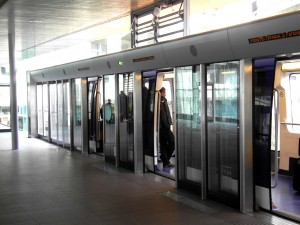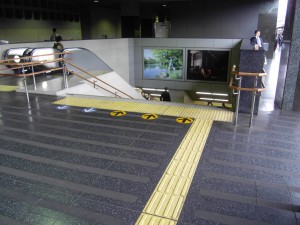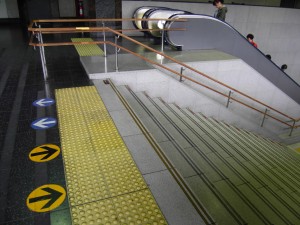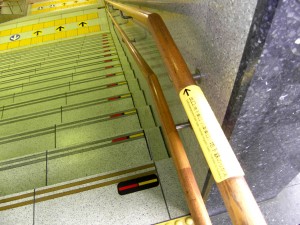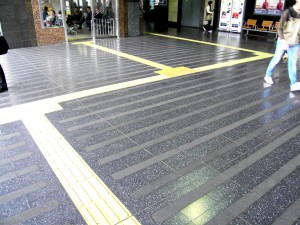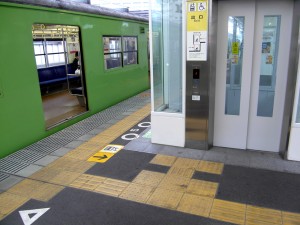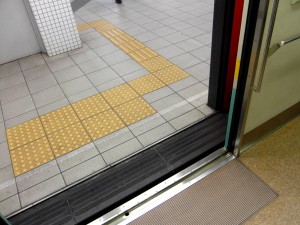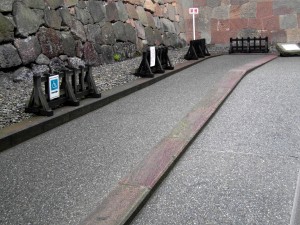2011-02-05: Further to my post, dated 15 January 2011 …
Many people directly or indirectly involved with Disability-Related Issues in Europe … may not yet know that, a few weeks ago, the European Union ratified the 2006 United Nations Convention on the Rights of Persons with Disabilities (UN CRPD). They may not even know that their own country, as a Member State of the European Union, had perhaps already ratified the UN Convention one or two years earlier.
At this time, the majority of Member States have proceeded, voluntarily, to ratify the Convention … with some of those, inexplicably, declining/refusing to ratify the Convention’s Optional Protocol.
Human & Social Rights can be a difficult subject area !
Ireland has not ratified the UN Convention … and, unfortunately, the attitude of many policy-makers and decision-makers within our Irish Institutions of State, large and small, is that it’s business as usual … no need to worry or fuss, or give a damn … until this country does actually sign on the Convention’s bottom line … an attitude which displays a magnificent ignorance of the changed reality, post Lisbon Treaty, which is the European Union’s Current Legal Environment !!
Please examine carefully, for yourselves, the findings of this Legal Study, recently approved for publication by the European Commission …
European Foundation Centre (EFC)
Brussels, October 2010
Click the Link Above to read and/or download PDF File (1.46 Mb)
.
EU RATIFICATION OF THE UN CRPD – ASPECTS OF EU LAW
The following are selected extracts from the EFC Study … my selection (!) … to answer specific issues relating to UN CRPD Implementation within the European Union. Typographical errors in the Study have also been corrected … and, post Lisbon Treaty, references to the EU Treaties have been properly updated …
The legal basis for the conclusion of the United Nations Convention on the Rights of Persons with Disabilities (UN CRPD) signals the appropriate legal basis for its implementation within the European Union (EU). In this respect, and in line with Article 4 of the UN Convention, implementation implies that instruments may be adopted or modified by the Union in order to comply with the Convention and give effect to its provisions and principles. Although the choice of the legal basis for the decision concluding an international agreement is very important, it is not decisive for implementation. In European Court of Justice Case C-178/0345, which concerned the implementation of the Rotterdam Convention on International Trade in Hazardous Chemicals, the Court stated that ” the fact that one or more provisions of the Treaty have been chosen as legal bases for the approval of an international agreement is not sufficient to show that those same provisions must also be used as legal bases for the adoption of measures intended to implement that agreement at Community level “. The latter statement means that EU Treaty provisions other than those mentioned in EU Council Decision 2010/48/EC to conclude the UN CRPD can be used as legal bases to implement UN CRPD obligations in specific fields.
.
The United Nations Convention on the Rights of Persons with Disabilities (UN CRPD) is an international human rights agreement where both the European Union (EU) and its Member States are contracting parties. The UN Convention is thus a Mixed Agreement. Mixed Agreements involve a Shared Contractual Relationship between the EU, its Member States and one or more third countries and/or international organisations. As a Mixed Agreement, the UN CRPD covers fields that fall in part within the competence of the EU, in part within that of the Member States and in part within the shared competence of the EU and its Member States. It is therefore essential for the EU and the Member States to closely co-operate, in order to implement legislation stemming from the Convention in a coherent manner and ensure unity in the international representation of the Union.
EU Member States, when participating in Mixed Agreements, do not act as entirely autonomous subjects of international law; they are subject to a Duty of Loyal Co-Operation between one another and the EU. This duty extends to each of the negotiation, conclusion and implementation phases. In this sense, there is a collective management of the obligations under international law. The duty of loyal co-operation, deriving from Article 4.3 of the Treaty on European Union (TEU), embraces two sets of obligations: first, Member States shall take appropriate measures, whether general or particular, to ensure fulfilment of the obligations arising out of the EC Treaty or resulting from action taken by the EU Institutions; and second: Member States shall facilitate the achievement of the Union’s tasks and shall abstain from any measure which could jeopardise the attainment of the Union’s objectives … which are set out in Article 3 of the Treaty on European Union (TEU).
Treaty on European Union (TEU) – Consolidated Version, as Amended by the Treaty of Lisbon
Article 4.3
Pursuant to the principle of sincere mutual co-operation, the Union and the Member States shall, in full mutual respect, assist each other in carrying out tasks which flow from the Treaties.
The Member States shall take any appropriate measure, general or particular, to ensure fulfilment of the obligations arising out of the Treaties or resulting from the acts of the institutions of the Union.
The Member States shall facilitate the achievement of the Union’s tasks and refrain from any measure which could jeopardise the attainment of the Union’s objectives.
.
In relation to EU Member States‘ Compliance with a Mixed Agreement concluded by the EU … the European Court of Justice has inferred that for matters falling within EU competence … the Member States fulfil, within the EU system, an obligation in relation to the Union which has assumed responsibility for due performance of the agreement. In other words, if a Member State fails to take all appropriate measures to implement provisions of the Mixed Agreement that fall within the competence of the EU … it not only fails to fulfil its international obligation, but is also acting in breach of EU Law. The European Commission may thus bring an infringement case against a Member State that has not properly fulfilled its duty. The principle underpinning such mechanisms is the ‘duty of loyal co-operation’, which provides the foundation for managing shared competence within Mixed Agreements.
The line dividing international responsibility for implementation of the International Mixed Agreement between the EU and its Member States depends on the obligations respectively assumed. The UN CRPD contains a clause setting out ‘separate’ responsibility. According to Article 44.1, Regional Integration Organisations acceding to the Convention shall declare, in their instruments of formal confirmation or accession, the extent of their competence. This division of responsibility for implementation implies that the European Union only bears responsibility for the breach of those obligations it has assumed.
EU Council Decision 2010/48/EC on the conclusion of the UN CRPD refers to EU competence in respect of those matters governed by the UN CRPD, and lists EU Instruments which demonstrate such competence.
.
STRUCTURE OF THE EFC REPORT
The main objective of the Study was to analyse the obligations set out in the UN CRPD and, in particular, to gather information about the various practices of the EU Member States and the European Union in implementing the UN CRPD.
The work was carried out by the European Foundation Centre (EFC), representing the European Consortium of Foundations on Human Rights and Disability … under Contract No. VC/2008/1214 … for the European Commission‘s Directorate-General for Employment, Social Affairs & Inclusion.
Section 1 of this Report sets the appropriate background for the analysis that will follow.
Section 2 of the Report provides an overview and general recommendations on the implementation of the social model of disability, and core obligations deriving from Article 1 and Preamble Paragraph (e) of the UN CRPD.
Section 3 of the Report provides an overview and general recommendations on the implementation of Article 3 (General Principles), Article 4 (General Obligations), Article 5 (Equality and Non-Discrimination), and Article 9 (Accessibility) of the UN CRPD. The section also reviews UN CRPD articles on Inter-Sectionality, namely Articles 6 (Women with Disabilities) and Article 7 (Children with Disabilities). It is worth noting that the articles addressed in this section are articles of general and crosscutting application, and therefore their application is relevant for the implementation of all articles of the Convention.
Section 4 of the Report provides an overview and general recommendations on the implementation of selected substantive provisions of the UN CRPD which apply existing civil, political, economic, social and cultural rights within the context of disability. Specifically, the section considers the implementation of Articles 16 (Freedom from Exploitation, Violence and Abuse) and 17 (Protecting the Integrity of the Person), which are seeking to assert protections that underscore the humanity of all persons with disabilities. The section also considers the implementation of Articles 12 (Equal Recognition before the Law) and 19 (Living Independently and Being Included in the Community), both of which aim at maintaining and safeguarding the autonomy of the person. Furthermore, articles on specific accessibility rights, namely Article 13 (Access to Justice) and Article 29 (Participation in Political and Public Life), are likewise addressed. Finally, the section considers the implementation of Articles 24 (Education) and 27 (Work and Employment).
Section 5 of the Report contains an overview and general recommendations on the implementation of articles which outline steps that are necessary to support reforms. Specifically, the section considers the implementation of Article 31 (Statistics and Data Collection), Article 32 (International Co-Operation), and Article 33 (National Implementation and Monitoring).
Section 6 of the Report suggests good practices for the EU and national policy-makers for the future and overall implementation of the Convention, and the effective achievement of its objectives.
It is worth noting that, while it is hard to be definitive, given that the UN Committee on the Rights of Persons with Disabilities is still in its infancy and has yet to pronounce on the obligations of the UN CRPD … it is nevertheless possible on the basis of the general principles of the Convention and interpretative tools, such as the Vienna Convention on the Law of Treaties, to identify illustrative challenges to the implementation of the UN CRPD. For the purposes of this Study, the review of EU and Member States policies and legal instruments is based on the analysis of the UN CRPD and checklists that were produced from this Study to measure progress.
Finally, for the purposes of the Study, a challenge is defined as a ‘difficulty’ posed by existing national or EU practice which may potentially hamper the full and effective implementation of the UN CRPD by the EU Member States and/or the European Union. In order to meet such challenges, it will be necessary, inter alia, for the EU (as appropriate) and/or its Member States to review legislation and/or policy with a view to full compliance. On the other hand, a practice is defined as good if it fulfils certain requirements of the Convention or mainstreams the general principles, consistent with Article 3 of the UN CRPD, and has an awareness-raising impact.
.
.
END

